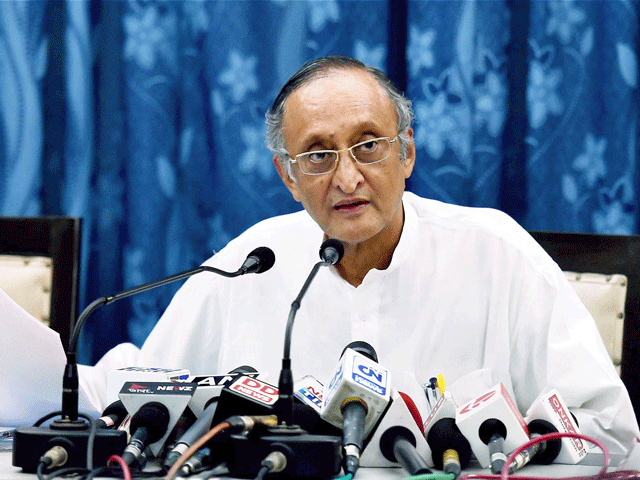West Bengal finance minister Amit Mitra has been within the news extra for his role as chairman of the empowered committee of kingdom finance ministers, busy giving completing touches to the GST. However, he excused himself from speaking on GST and rather launched into the “changes” which might be taking area in West Bengal, mainly the funding climate, which he claimed aren’t highlighted. In an hour-long interview with ET, Mitra reeled out several numbers to show that under Mamata Banerjee’s management, West Bengal is becoming a fave funding deal all over again. Edited excerpts: Eft Crop
What is the temper among industrialists?
Anybody I met these days, consisting of private equity corporations, multinational companies, acknowledge the exchange that has taken place in West Bengal. The boom of gross fee delivered (GVA) in 2014-15 has been a little over 10%, while India’s increase has been 7.3%.
Tell us what passed off within the economic year 2015-16?
We are possibly searching at GVA growth of as plenty as 12% when India has been developing at least three to four percentage points less. In 2010-11, our nation’s nominal GDP turned into .’4,61,000 crore. In 2014-15, it has doubled to .’8,00,000 crore, and in 2015-16, our revised figures are .’9,39,000 crore.
How did this manifest? What were the drivers?
There are 3 important drivers. The primary is the government expenditure which translates into a Keynesian multiplier. Throughout 2010-11 (the remaining 12 months of the communist authorities), West Bengal’s deliberate expenditure turned into little over.’14,650 crores. The real planned expenditure in 2014-15, (Below Trinamool) had touched.’39,893 crore. In 2015-sixteen, it’s far .’54,000 crore. So from .’14,000 crore to .’54,000 crore – it’s miles quite a jump.
READ MORE :
- Apple to debut standalone 5K screen, MacBook Air refresh, ‘pro’ iPad software program features, the document says
- 10 Notable iPad Apps with Exquisite Mac Versions
- What is Dividend signaling in Finance
- Tesla making plans to make its Autopilot Software even more restrictive
- The week ahead in enterprise and finance
What’s it spent on?
Capital expenditure inside deliberate expenditure, which is asset introduction, was a bad 26% in 2010-11under the communist regime. We reversed it. It is really six instances of what it changed into in four years; what is simply manner to me as an economist is that Keynesian multiplier on asset developing expenditure, which means that cement, metal the whole down-the-chain industry which creates Keynesian multiplier is approximately four times in India. One of the factors it’s debated within the West is whilst non-public expenditure is slow, public expenditure can trigger private investment.
One detail of this is a personal expenditure, and it receives attracted when they see GDP boom taking region in a stimulated financial system. The dipstick checks show there may be a whole lot of power inside the financial system. So, those numbers of planned expenditure and capital expenditure are the triggers. In the communist rule, capital expenditure becomes a terrible 26% During their last 12 months, and it becomes shrinking. Planned expenditure changed into a puny .’14,000 crore. A climb to .’54,000 crore in 5 years this has in no way passed off in any nation to my expertise. And no person is aware of approximately it.

Is not there a flipside to the public expenditure?
West Bengal is going through the looming debt lure, which Mamata Banerjee herself termed as a death trap. The debt is exceptional. The debt left at the back of with the aid of the communist authorities became .’2,00,000 crore. Its bonds or small financial savings matured, I am no longer speakme approximately interest. I am speaking pretty much compensation of the main amount. In 5 years, we repaid .’42,000 crore, which is all from the .’2,00,000 crore left behind with the aid of the CPI(M).
What we have borrowed has now not come lower back to maturity. These are all 10-12 months of debt that we repaid. The overall quantity we’ve got borrowed At some point of our regime is .’1,13,000 crore of which .’94,000 crore is for reimbursement and hobby of that .’ 2,00,000 crore. Consider, my remaining 12 months’ repayment and interest become .’28,000 crore. This yr, it’s far about .’33,000 crore. And in the coming years, when they borrowed the maximum in 2007-08, those bonds will come to hang out with us.
Do your new borrowings at a decrease cost?
At a mile decrease price as we have borrowed from the market. We have borrowed at a much decrease price. At least 200 points distinction. Having stated so, our debt GDP ratio has come down.
How come?
Due to the fact GDP has grown phenomenally. So, whilst there may be no doubt that We’re in debt, entice Due to the fact We’re essentially borrowing. Consider, we’ve got borrowed .’1,13,000 crore of which .’94,000 crore has long gone toward compensation and hobby. We’ve therefore borrowed for improvement about .’18,000 to .’19,000 crore in 5 years. So we have not borrowed much at all.
How did you fund the increase in GDP which you cited in advance?
Taxes have precisely doubled.
How did you manage to try this?
Tax collections went up from Rs 21,000 crore to almost Rs 43,000 crore in 4 years in our regime. We have implemented the most important e-taxation pressure through any country in India Throughout the period, and the crucial authorities have given us the best award for that.


